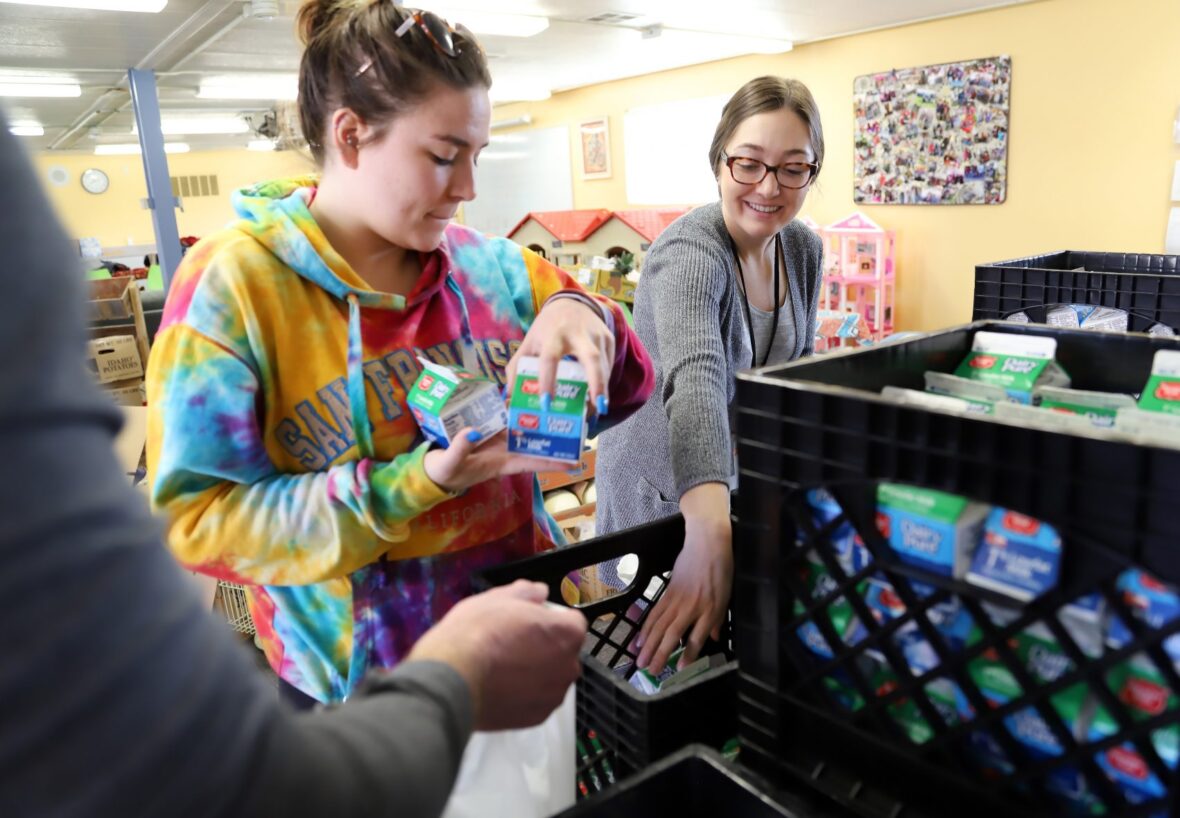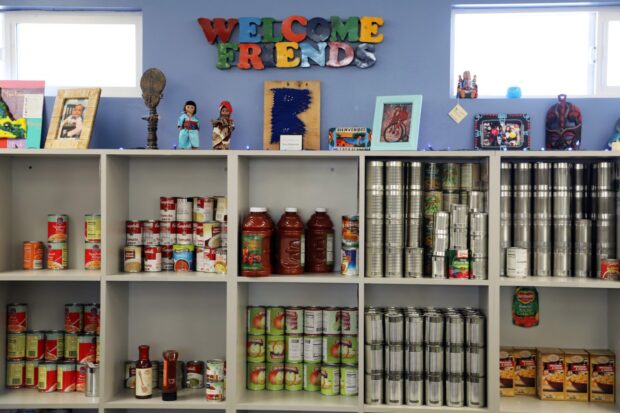
Katharine Cross darted around a mobile classroom-turned-food pantry at Boise’s Garfield Elementary School on Monday, most of the time a phone pressed tight to her ear.
“I have rice, yep. Do you want some rice?” Cross asked a parent on the other end of the phone, poking through boxes to assemble a food package for his family. She added cucumbers to baggies of onions and potatoes, and helped families carry food boxes out to their cars.
Cross, Garfield’s community school coordinator, had expected the school’s food pantry to be busy at the end of this week, when she made sure Garfield families had enough food to get them through spring break.
Instead, Cross and a crew of volunteer staff hurried to package foods and perishable for families across the Boise School District Monday, trying to prepare them for an immediate two-week school shutdown announced on Sunday afternoon.
“We’re seriously learning hour by hour how to do this,” said Sonia Galaviz, a Garfield fifth-grade teacher who helped assemble food boxes. “We just want to make sure our families are taken care of.”
More than a dozen school districts announced closures this weekend as Idaho confirmed its first five cases of the coronavirus, a contagious disease that’s caused a global pandemic, thousands of deaths and the wholesale closure of restaurants and schools in other states.
By Monday, at least 125,000 Idaho students were out of school because of virus-related closures, according to Idaho Education News’ calculations.
The abrupt closures have left districts across the state rushing to find alternative ways to help families that rely on schools for child care and food.
At community schools like Garfield, where more than 98 percent of students come from low-income families, providing those services is considered so critical it’s baked into the school’s daily operations.
On Monday, as a stopgap after the school closure notification, The Boise district ran four “emergency day camps” for families that needed child care, and offered one day of food-pantry access at the district’s six community schools.
Garfield principal Darryl Gerber assembled two dozen volunteer teachers to supervise the school’s day camp, but ended up sending most of them home. By mid-morning, only three students had arrived. They played Candy Land and worked on puzzles in the first-grade classroom.

In an outside building, Cross and teachers arranged bags of potatoes and crates of cantaloupe, some of which came from district cafeterias where the produce would have spoiled over the break. As Cross called the parents who frequently use the food bank, she worried that some might not have access to the district’s emergency measures.
Many of Cross’ regulars work during the day and couldn’t come in during the 10 a.m. to 3 p.m. emergency pantry hours. Some told her that without a bus service for the day camps, their kids would have to stay home alone. Others said they were concerned about coming around people, and did the pantry have gloves or masks?
“We get traffic here for families that have transportation, but people work today,” Cross said. “If you’re cleaning, if you’re working in a restaurant, you don’t have the luxury of taking a day off, a week off with the kids. So, kids are home alone probably, or they’re struggling to find daycare.”
Late Monday, the district announced a new, longer-term child-care plan. District officials are partnering with the Boise Parks and Recreation department to open four child-care centers, open from 8 a.m. to 5 p.m., starting Tuesday and running through March 27.
Those four sites are limited to 24 students each and priority goes to Boise district students. Parents can register here.
The district is also working on a food-distribution plan, spokesman Dan Hollar said.
Dawn Romeo, the parent of three students at Garfield, stopped by the school late Monday morning to pick up her son’s viola. The hallways, usually bustling with 300-plus students, were quiet except for a few staff. The classrooms dark and locked.
As a stay-at-home mom, Romeo can watch her children over the break, a luxury she says many of Garfield’s families can’t afford. Romeo respects the district’s decision to be proactive in preventing the spread of coronavirus, she said, though she thinks schools may have closed down too soon. And she’s got a host of questions about what comes next.
“What is it going to do for our older kids who need those credits to graduate?” she asked.
“What is it going to do for our kids who are already without?”
“It’s just a terrifying situation,” she said. “If you think about businesses closing down – what are our families going to do?”
